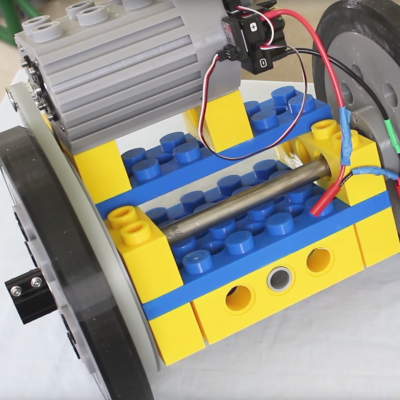[Nico71] works for a company that makes industrial CT scanners. These x-ray machines look inside a piece of equipment, allowing operators to verify assembly and to inspect for material integrity. It also allowed [Nico71] the opportunity to scan a LEGO servo he had lying around, and which no longer worked. The resulting images look fantastic, and really allow you to look into a closed system and pick apart how it works or why it’s not working. In this case, you can see one of the wires has been damaged.
[Nico71] plans to scan a bunch of LEGO components, comparing (for instance) official LEGO products with shanzhai knockoffs. Which is better constructed? It’s one thing to have thinner or cheaper plastic, or a lower grade of steel, but how is the part engineered?
We’ve covered a surprising amount of CT goodness on Hackaday, including this process for turning a CT scan into a 3D print and a post on improving a homebrew CT scanner. Continue reading “LEGO Components Under X-Ray”

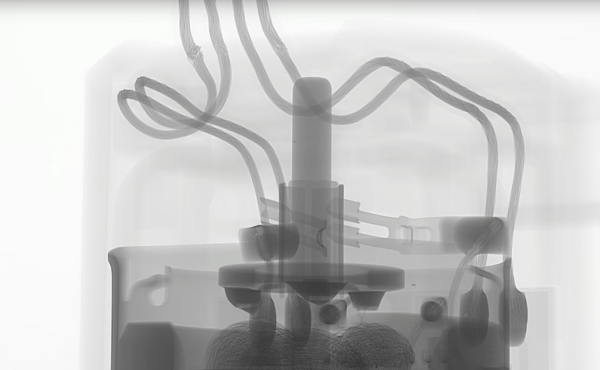
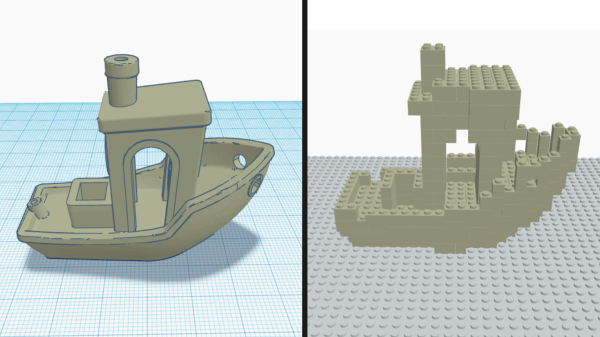
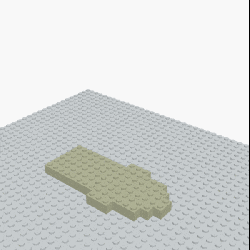 [Andrew Sink] made a
[Andrew Sink] made a 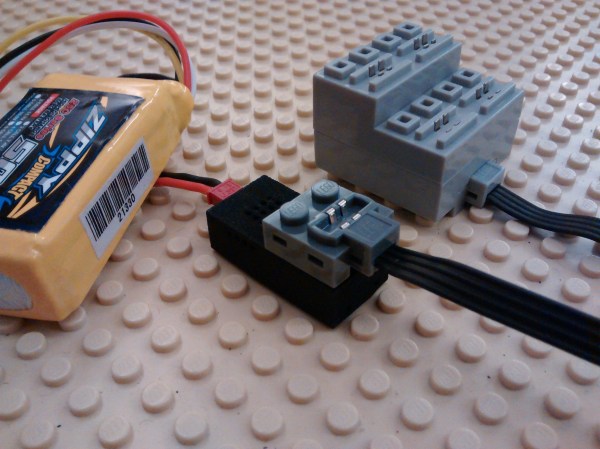

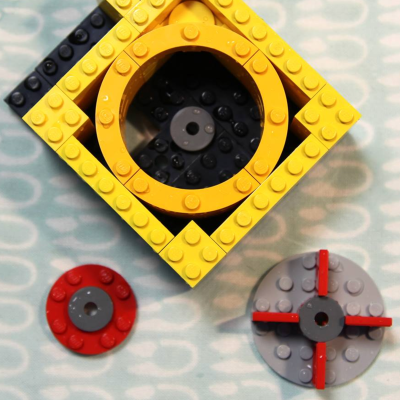 A Power Functions motor turns a 6×6 round plate that appears to have 1×2 smooth plates jammed between the studs, and secured with a 4×4 round plate on the other end. He geared up the motor so the assembly is spun very quickly, with those smooth plates forcing the water through a Technic mounting hole in one of the bricks.
A Power Functions motor turns a 6×6 round plate that appears to have 1×2 smooth plates jammed between the studs, and secured with a 4×4 round plate on the other end. He geared up the motor so the assembly is spun very quickly, with those smooth plates forcing the water through a Technic mounting hole in one of the bricks.

 He built a LEGO-looking enclosure for the battery as well, based on a 2×6 brick. The battery pack sits behind the motor with the tail light on top and holds the radio control receiver as well the twin LiPos. The head and tail lights pack 24-LED discs and are controlled by [James]’ FS-GT2B 3-channel RC transmitter. Its third channel is just a button, and he can trip that button to activate the lights with the help of a Turnigy receiver-controlled switch.
He built a LEGO-looking enclosure for the battery as well, based on a 2×6 brick. The battery pack sits behind the motor with the tail light on top and holds the radio control receiver as well the twin LiPos. The head and tail lights pack 24-LED discs and are controlled by [James]’ FS-GT2B 3-channel RC transmitter. Its third channel is just a button, and he can trip that button to activate the lights with the help of a Turnigy receiver-controlled switch.
